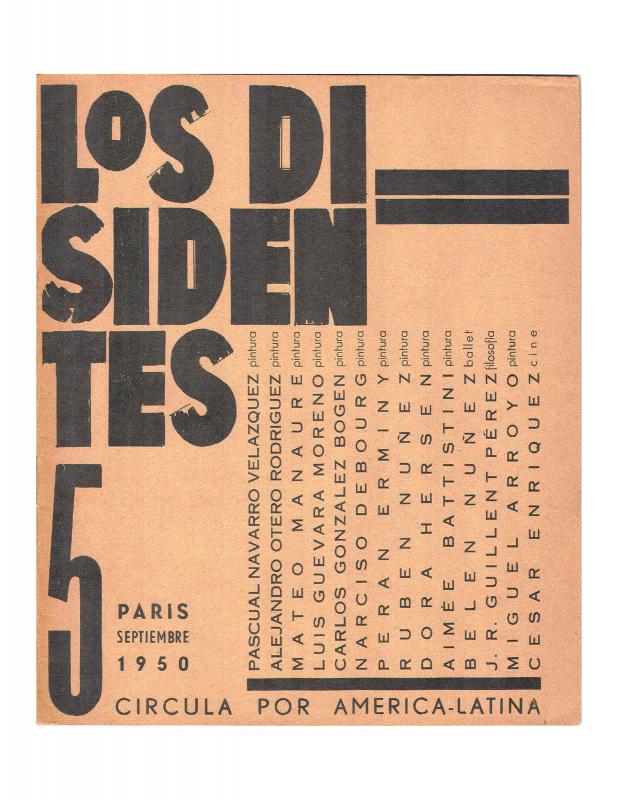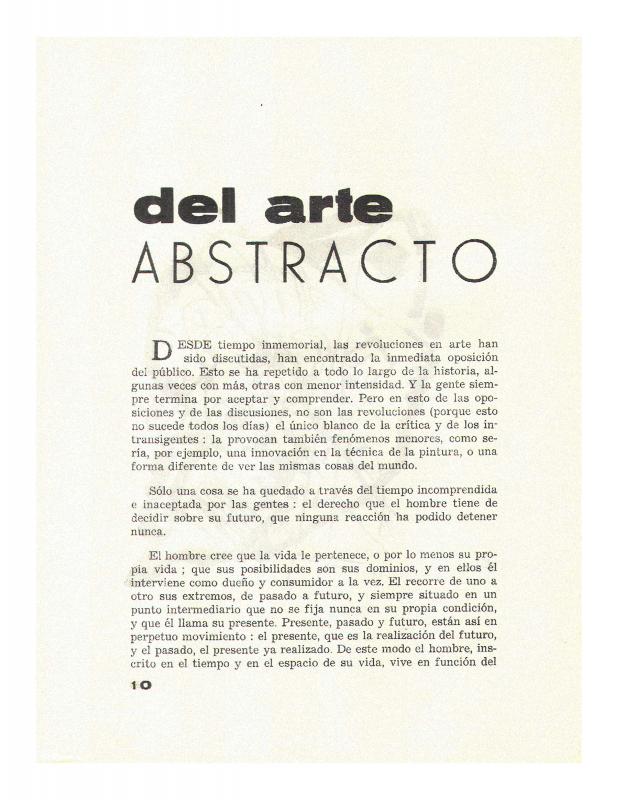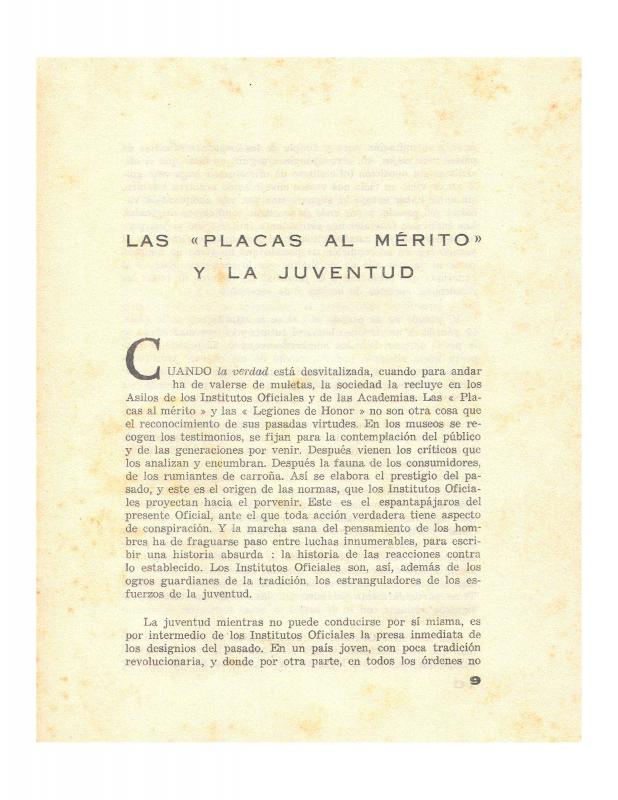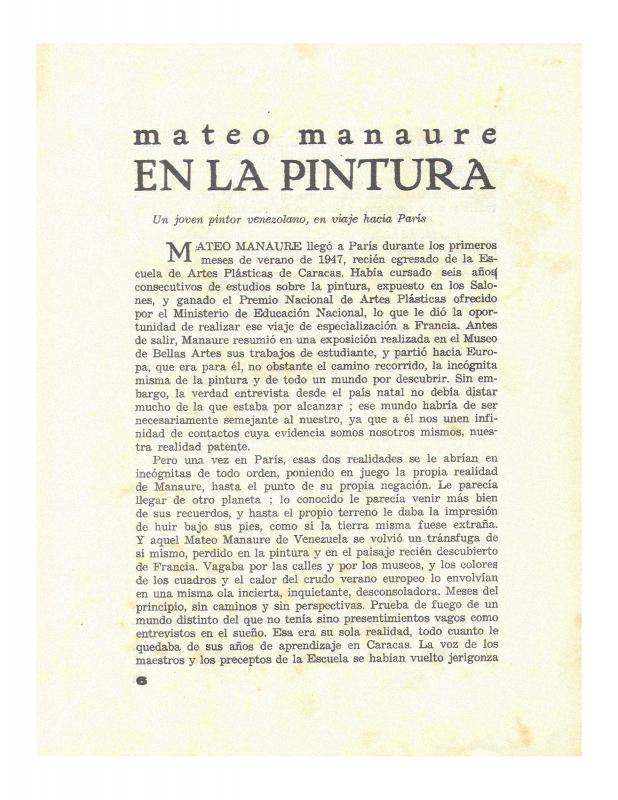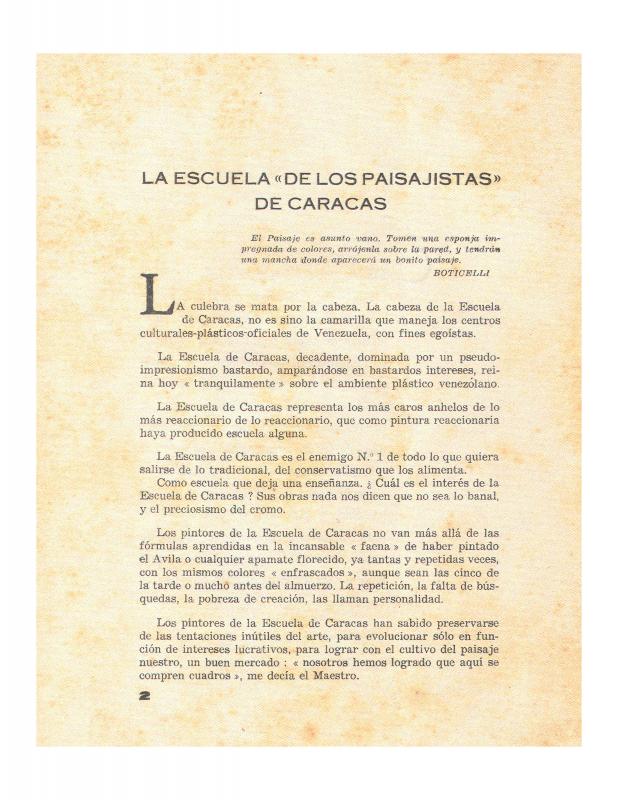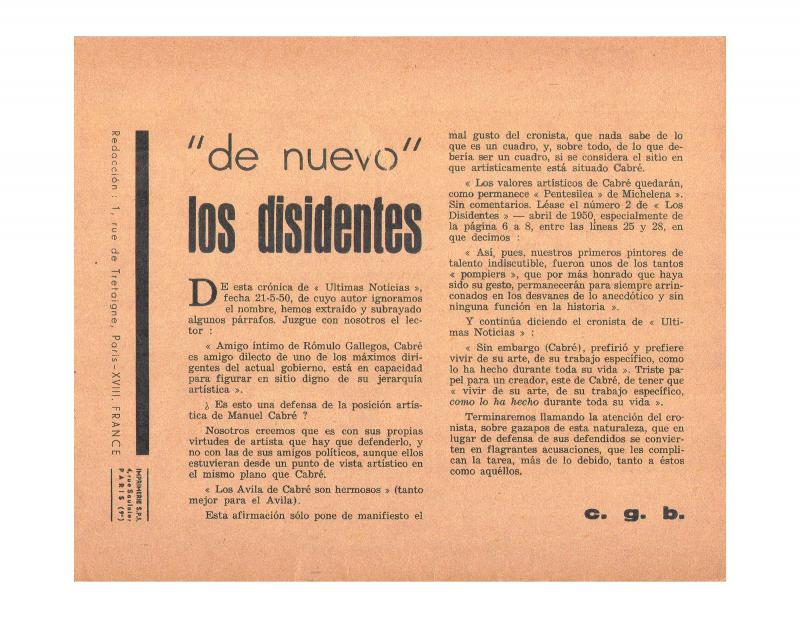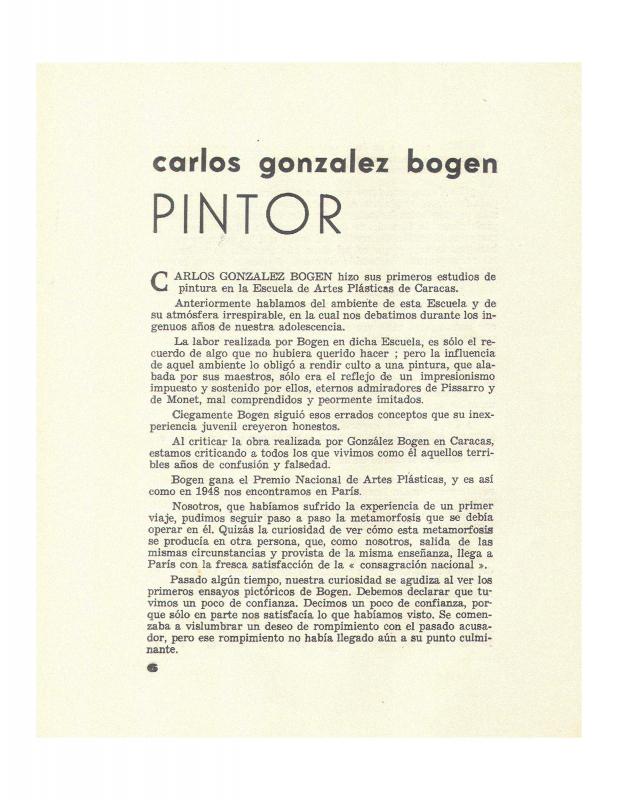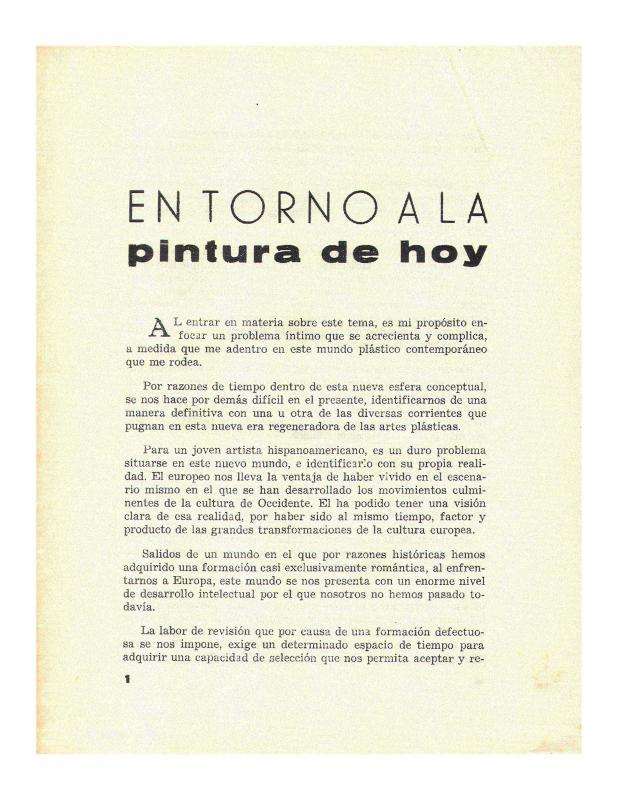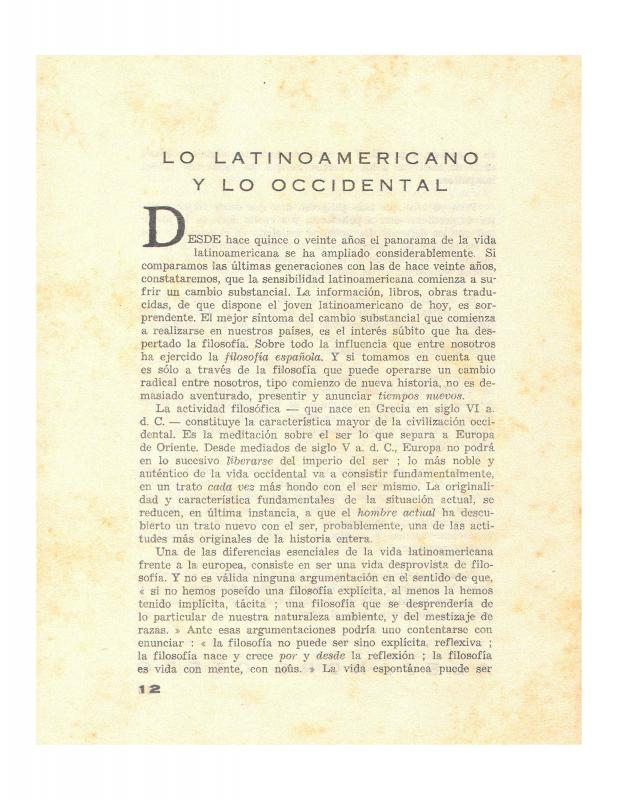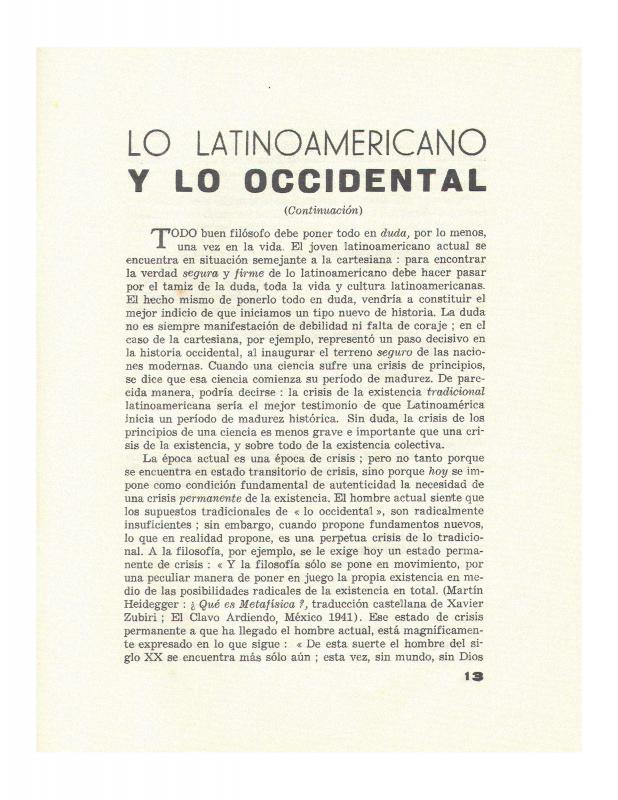The publisher’s note which gives rise to the magazine —considered a “brochure” by the writers from Los Disidentes group— , although it does not directly refer to abstract art, proposes as its essential aim (stated as a manifesto) “to replant from the roots the themes and values of Latin American culture”; in their judgment, abstract art will be the means to accomplish this aim. The precepts of this first issue are supplemented by the issues 2, 3, and 5. Read together, these issues compile what can be considered as the ideological and artistic foundations [of the Dissidents], although issue no. 5 is most often considered as the group’s manifesto, known as the “NO Manifesto” [see ICAA digital archive (without title) “We did not come to Paris to study diplomacy(…)](doc. no. 813555)]. Los Disidentes undoubtedly represent a turning point for the youth of 1950s and the push toward modernity in Venezuela; in issue no. 1, [the group] expresses their duty as Latin Americans, as well as their avant-garde stance: “No interest, no sentimentality will come before what we deem to be our inalienable duty. The Latin American youth are today posed with a choice, either to submit to the traditional canon, or to help Latin America achieve her true dignity.” The cover of issue no. 1 lists the names of the founding members of the group.
Los Disidentes was a group created in Paris in 1950, by Venezuelan artists and writers who lived in the city between 1945 and 1952. From the French capital, they fought against the official education imparted by the Escuela de Artes Plásticas of Caracas, whose foundations were in landscape and nativism. Doing honor to their name, Los Disidentes sought to ensure a renewal of traditional and academic art through the assimilation of the tenets of European abstraction. Among its members were the painters: Alejandro Otero (1921–90), Mateo Manaure, Pascual Navarro, Luis Guevara Moreno, Carlos González Bogen, Narciso Debourg, Perán Erminy, Rubén Núñez, Dora Hersen, Aimée Battistini, as well as then philosophy student, J. R. Guillent Pérez. These were later joined by other national artists (Armando Barrios, Miguel Arroyo, Oswaldo Vigas, Omar Carreño, Alirio Oramas and Régulo Pérez). The group published an eponymous magazine, Los Disidentes, which produced five issues, and served as the chief outlet for their ideas. [For other texts on this group, see the following documents in the ICAA digital archive: by Otero, “Del arte abstracto”, [On abstract art] (doc. no. 813611), (“Las "placas al mérito" y la juventud” [Badges of Honor and Youth] (doc. no 813429) and (“Mateo Manaure en la pintura : Un joven pintor venezolano, en viaje hacia París” [Mateo Manaure on painting: a young Venezuelan painter en route to Paris] (doc. no. 813639); by González Bogen (“La escuela "de los paisajistas" de Caracas” [The school “of the landscapists” of Caracas] (doc. no. 813695 and “"De nuevo" Los Disidentes” [“What’s New” Los Disidentes], (doc. no. 813667); by Manaure (“Carlos González Bogen: Pintor” [Carlos González Bogen:Painter] (doc. no. 813583); by Debourg (“En torno a la pintura de hoy” [On Today’s Painting], (doc. no. 813597); and by Guillent Pérez both “Lo latinoamericano y lo occidental [Parte I]” [Latin American and Western Part I], (doc. no. 813723 and “Lo latinoamericano y lo occidental: (Continuación)” [Latin American and Western: (A continuation)], (doc. no. 813478)].

